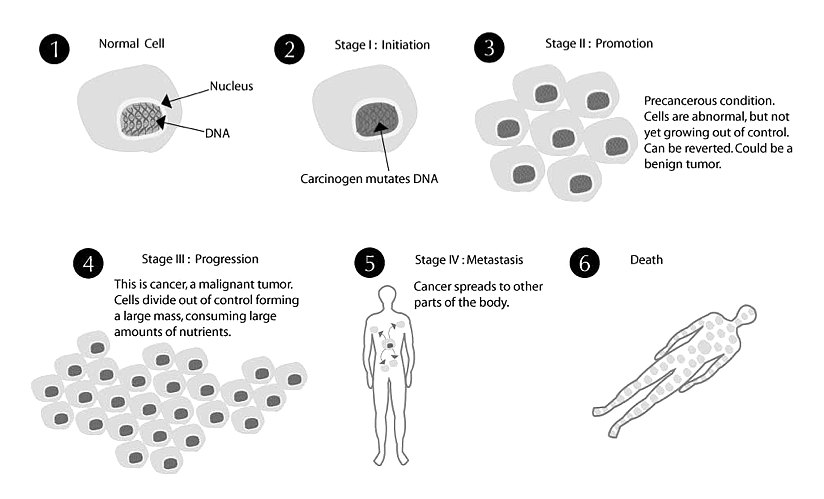About Cancer
Section I: Cancer Basics
Chapter 1 – The Cancer Process
What is cancer?
Cancer is a chronic disease, which means that it will not go away without outside interference. In its simplest form, it is the uncontrolled division of cells that have no function in the body. All normal cells in our body have a function and have a limited lifespan. This function is attained by a process called differentiation, in which cells are "assigned a job" and develop in such a way and with certain characteristics that allow them to perform their job very well. For example, blood cells have the function of carrying oxygen to other cells throughout the body.
A cell that becomes cancerous loses differentiation, that is, it no longer has a function and becomes "undifferentiated". It also gains immortality as it does not eventually die like normal cells. Since it has nothing better to do, the original cancer cell begins to divide and divide, passing on this new genetic code to its offspring, until a mass of abnormal cells forms. At this point, we may or may not have cancer. If this mass of cells does not divide and grow uncontrollably, it is not cancer – it could very well be a benign tumor. Something happens to these cells that causes them to progress, to begin dividing uncontrollably. The resulting large mass of cells that don't die is what we commonly refer to as cancer. It is a malignant tumor. The mass of cells will grow and invade an organ and, if unchecked, will probably metastasize (spread to other parts of the body).
The problem with these growing cancer masses is that the tumor cells consume nutrients and energy. As a tumor grows, it creates blood vessels to feed itself. Since it grows very quickly, it needs abnormal amounts of nutrients and consumes huge quantities of energy, so it winds up starving to death the organ it is growing on. You will eventually die from organ failure or other diseases that can develop because of a thoroughly weakened immune system. Figure 1 is a simple diagram that describes the cancer process.
Figure 1: The Cancer Process

In order for a cell to become cancerous, a mutation must first occur to its DNA (deoxyribonucleic acid, its genetic material). All cancers begin with the mutation of a single cell. This actually happens all the time in our bodies, but cells whose DNA has been altered are usually killed by cells in our immune system or are converted back to normal cells. When our immune system cannot handle the mutation (usually because of a lack of nutrients), the result is an abnormal cell that will divide and probably form a tumor. If the right changes occurred to the cell, it might become a malignant tumor right away, in other words cancer. If it did not become a malignant tumor, something else must happen to these cells, probably a specific additional mutation to the DNA, in order for the cells to become cancerous.
The next question on your mind is probably how these mutations to our DNA occur. Many "things" have been found to cause mutations, and these things have been labeled "mutagens". Mutagens that lead to cancer are called carcinogens. All carcinogens are mutagens since by definition you need a mutation to get cancer, yet not all mutagens are carcinogens because a mutation does not necessarily lead to cancer. Some mutations may lead to a benign tumor, to no tumor at all, or can actually be beneficial.